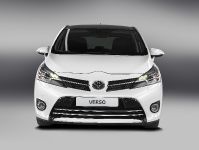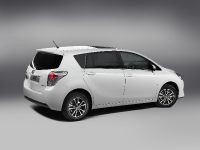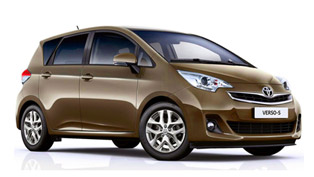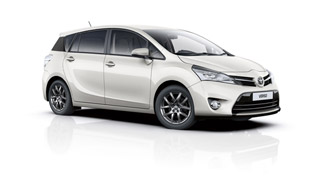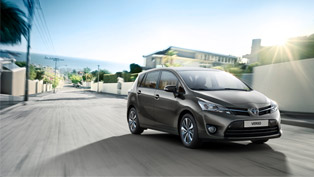2013 Toyota Verso to be Revealed in Paris
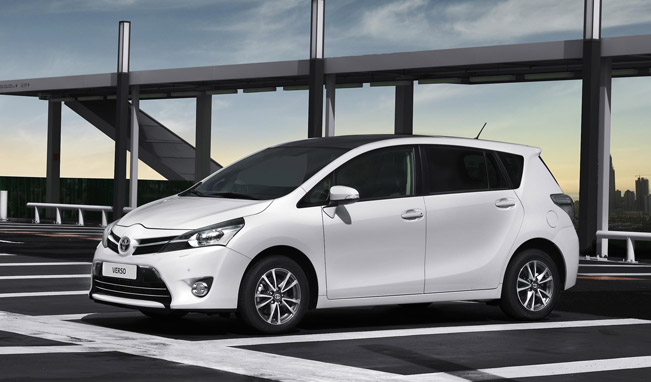 2013 Toyota Verso is going to be unveiled at the 2012 Paris Motor Show. The new model will join the new Auris and Auris Touring Sports and will be the third element in the company's renewed product offensive in the C-segment.
2013 Toyota Verso is going to be unveiled at the 2012 Paris Motor Show. The new model will join the new Auris and Auris Touring Sports and will be the third element in the company's renewed product offensive in the C-segment.
The new Toyota model has been significantly upgraded with more than 300 parts changed. Now it adds more style and comfort and improved handling. Regarding the exterior it exhibits Toyota's new design philosophy. On the other hand the interior has been also enhanced, the 2.0-litre D-4D diesel engine has been revised for lower CO2 emissions, and at last the driving dynamics have been sharpened and NVH levels have been reduced.
The main changes done on the exterior are at the front. They make the car more alike the new Auris and Auris Touring Sports. The aim has been to reduce the perception of the vehicle's height while accentuating its width and length.
The new details include a large, trapezoidal grille set within a redesigned bumper, and a smaller upper grille that spans the full width between new headlights, larger Toyota badge, set lower on the bonnet, and a chrome-finish horizontal bar that extends into the headlamp units, which incorporate new LED daytime running lights.
The car also runs on new 17-inch alloy wheels which have the same design seen before. However, they have now darker finish. At the rear there is a new bumper that incorporates an integrated low level diffuser.
The interior changes include extensive new trim details and a new satin black paint finish. Soft-touch material and Nappa leather are used around the steering wheel, door trims and armrest. Satin chrome trim highlights are included on the driver's instrument surrounds, the instrument binnacle hood, air vents, instrument panel, gear shift and door grips.
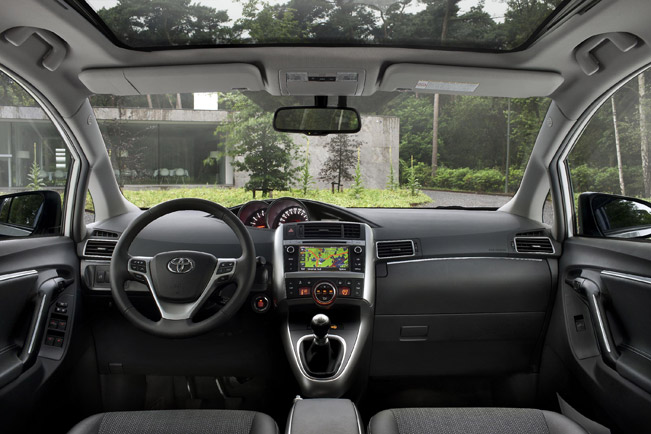
New seat fabrics, colours and designs have been introduced and across the range the front seats have improved side bolster support; the bolsters themselves have a harder-wearing finish. The Verso model also offers roominess with its best-in-class 975 mm couple distance between the first and second row of seats.
Moreover, throughout the interior includes spacious centre console box, door pockets, seatback storage, fold-down tables with integrated cupholders, a drawer beneath the front passenger seat, an overhead consoles and pockets for the driver and front passenger that can be used to hold mobile phones or music players.
In addition, a very desirable feature is included as an option: a full-length panoramic roof, measuring 2340 by 1280 mm, bringing significantly more light into the cabin and increasing the sense of spaciousness.
More importantly, the car is propelled by a 2.0-litre D-4D diesel engine, which was revised for better torque delivery at low revs and quieter running. In addition, it is important to mention that the CO2 emissions have been reduced by 10g/km to fall below 130g/km.
The other option is the 2.2-litre D-CAT diesel unit mated to either six-speed manual or automatic transmission. The former develops 175 hp (131kW) with 159g/km CO2 emissions and the latter 148 hp (110kW) and 178g/km CO2.
The 1.6 and 1.8-litre Valvematic petrol engines are the last two options in the engine range. Both are matched to a six-speed manual gearbox. At last, the driving dynamics of the car have been further revised to achieve even greater body control and more agile handling.
Source: Toyota
